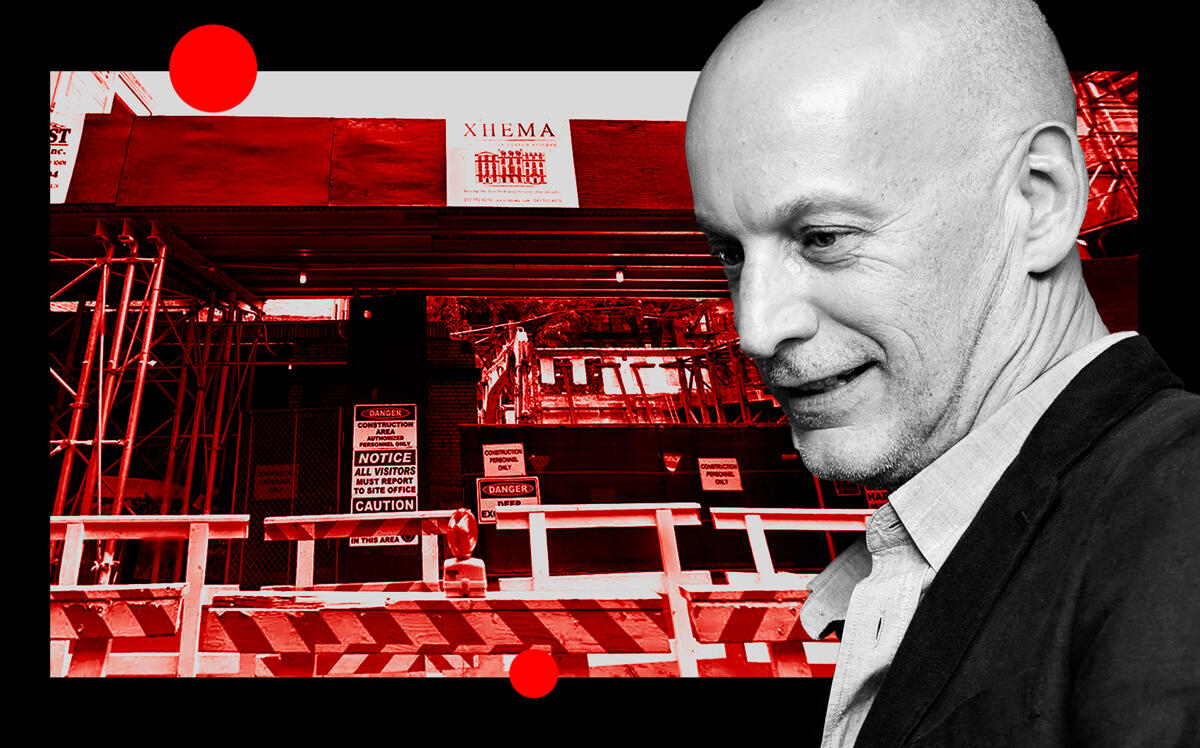 Paul Manafort’s Brooklyn townhouse heads to foreclosure
Paul Manafort’s Brooklyn townhouse heads to foreclosure
Trending
Botched foundation costs Village megamansion project $10M: lawsuit
Mysterious magnate behind 85 James Street blames “useless” piles for 13-month delay

Things built on a weak foundation eventually crumble, and a Greenwich Village megamansion project is no exception, its developer argues in a lawsuit.
The anonymous builder is accusing a contractor and consultant of installing 23 “useless piles” at its 12,000-plus-square-foot project at 85 Jane Street. Curbed reported in 2016 that sources identified billionaire Jon Stryker, heir to the Stryker Corporation medical supply company fortune, as the person behind the Greenwich Village project.
It began a decade ago with the $32 million purchase of two properties a block and a half from the Hudson River. Now the plaintiff, 85 Jane Realty LLC, is seeking $5 million each from Xhema of New York and Tectonic Engineering & Surveying Consultants.
The lawsuit alleges that Xhema failed to properly grout the foundation piles it installed and that Tectonic inspectors overlooked the deficiencies. That led to a more invasive installation that damaged neighboring properties and a year-plus delay to repair them.
According to the lawsuit, 85 Jane Realty contracted with Tectonic and Xhema in 2017. Xhema’s portfolio includes both city and country properties, including four separate floors at 834 Fifth Avenue, a co-op that overlooks Central Park and has been described as “one of the city’s most exclusive addresses.”
Read more
 Paul Manafort’s Brooklyn townhouse heads to foreclosure
Paul Manafort’s Brooklyn townhouse heads to foreclosure
 Brooklyn developer sues Daily News for calling him “land shark”
Brooklyn developer sues Daily News for calling him “land shark”
The Jane Street project has garnered attention for quite some time. The New York Times reported in 2012 that the properties purchased for it had served as an ice cream factory, a garage and a Steinway piano showroom. They were to be gut-renovated and turned into a massive private residence.
In 2016, the Landmarks Preservation Commission rejected the developer’s plan to turn two historic garages into a three-story structure with a 90-foot tower for a study and library. The commission later approved a modified project, with no tower and larger setbacks. It also halved their height of a two-story glazed wall proposed to enclose a massive garden.
The foundation work began in early 2018 but the 23 piles were not installed until early 2019. Every pile failed a strength test.
“Xhema’s failure to install foundation piles with the required pressure grouting should have been noticed by any remotely competent special inspector, who would not have signed off any inspection with such defects,” the lawsuit asserts.
Rock-socket piles were installed because additional friction piles would not fit between the defective ones, which were left in the ground to avoid displacing the soil.
As the replacement piles were installed, cracks formed at an adjacent building. The Department of Buildings issued several stop work orders and 783 and 785 Washington Street had to be partially vacated.
After “intense negotiations” with the neighboring property owners, work resumed 13 months later, according to the lawsuit.
Xhema and Tectonic did not immediately respond to a request for comment.




